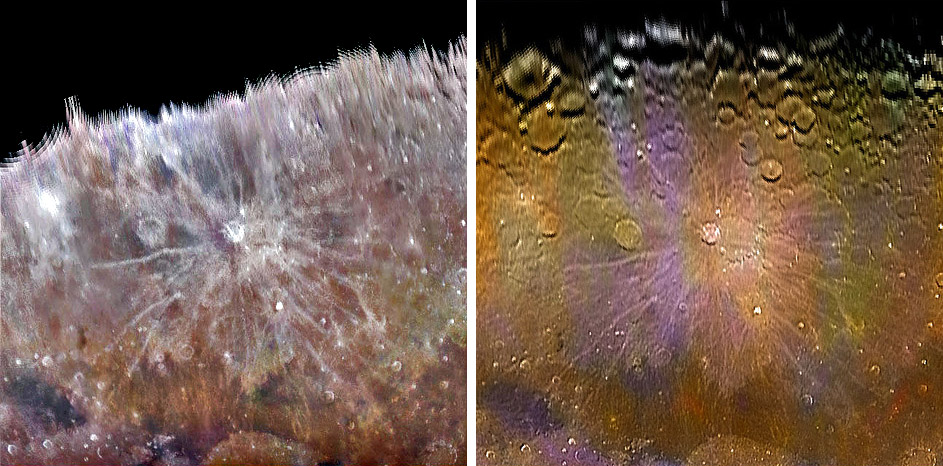
images by Zac Pujic (right) and Mario Weigand (left).
Yesterday’s LPOD stated that from our Earth-viewing direction it could not be determined if Anaxagorus formed from an oblique impact. I specifically said that, hoping that Jim Mosher would rectify some high-Sun images of the crater using his LTVT software - and he did! The right image is one of Zac’s exaggerated color mosaics, and Mario’s image (left) has been highly stretched by me to maximize the contrast between the rays and the surrounding terrain. Both images show that rays are fairly widely dispersed around Anaxagoras, suggesting a normal impact, rather than an oblique one. But both images also show that the character of the rays differs east and west of the crater. To the east (right) there are many narrow filamentary rays, whereas on the west, there are fewer rays that are wider and more widely spaced. In fact, the crater Philolaus - due west of Anaxagoras - is straddled by rays, but none cross it. This provides a slight suggestion that the projectile may have come from the west, but not at a very low angle. It is peculiar that two of the western rays bend - I don’t know why that happens. Also note the very narrow ray at an angle to most rays south of Anaxagoras. This, and a few others, actually come from the small bright crater Epigenes A.
Technical Details:
Left: October 17, 2005, 21:40 UT.
Right: May 13, 2006. 32 cm f/5.75 Newtonian @ f/28 + Phillips ToUcam Pro webcam.
Related links:
Rükl chart 4; Clementine chart 3
Mario’s website
Zac’s website
Yesterday's LPOD: Page One of a New Book
Tomorrow's LPOD: Full Moon Farside
COMMENTS?
Register, Log in, and join in the comments.



